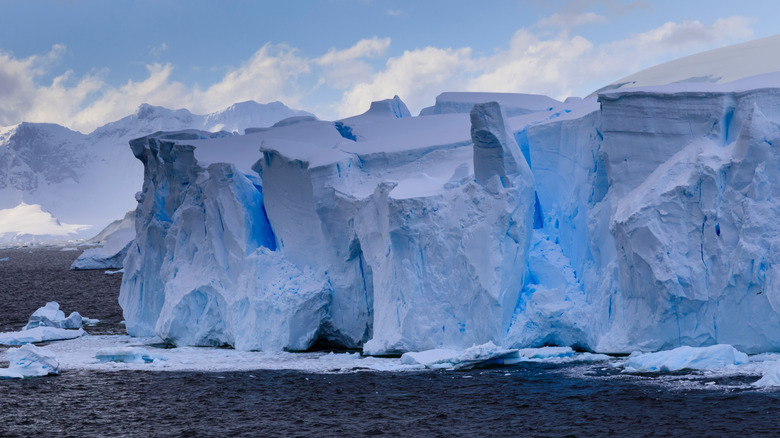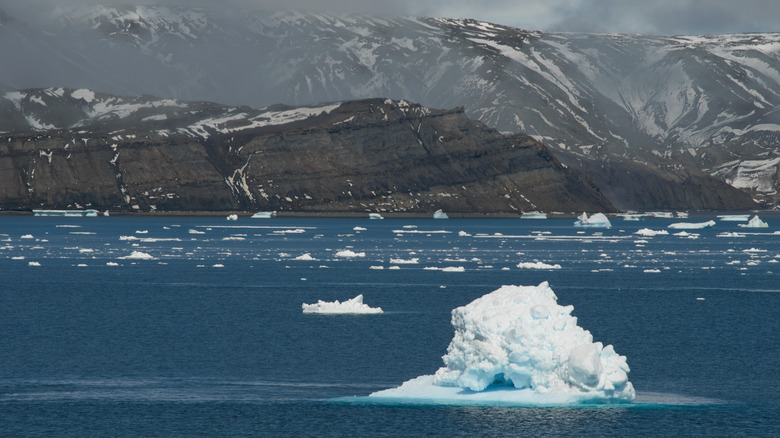What Makes The Temperatures In Antartica Right Now So Concerning
For decades, scientists have warned us about the globally rising temperatures with imagery of melting icebergs and calving glaciers in some of the world's coldest regions. Despite being the southernmost continent on Earth, Antarctica has always been the center of attention for studies related to global warming. But now, a series of extreme weather changes in Antarctica, including a heatwave followed by snowfall, is baffling researchers who are now trying to relate them to global warming. As Antarctica approached winter, the continent witnessed freakishly astonishing and unusually warm weather. On March 18, the Concordia weather station in eastern Antarctica recorded a temperature of only 10° Fahrenheit (-12.2° Celsius), whereas Russia's Vostok station recorded 0°F (-17.7°C). The temperature at Concordia station was 70°F (40°C) higher than the average in Antarctica, while the temperature at Vostok station was the highest ever observed.
These changes alarmed researchers, who were busy trying to understand the sudden heatwave around the North Pole, where temperatures soared more than 50°F (30°C) above the average. Meanwhile, the Terra Nova Base, close to the northeastern coast of Antarctica, experienced temperatures measuring 45°F (7°C), way above freezing.
Atmospheric river helped replenish some ice in inner Antarctica
The milder weather was a result of a historic atmospheric river. Atmospheric rivers are massive currents of wind carrying moisture over an area. SciJinks notes atmospheric rivers can be up to 375 miles (~600km) wide and 1,000 miles (1,600km) long. Once the water vapor in the atmospheric river is cooled enough to condense, it causes precipitation, which is precisely what happened with the river flowing over Antarctica. It resulted in massive snowfall in the inner regions of the snow-clad continent. The heatwave baffled researchers like Jonathan Wille, a Ph.D. fellow at France's Université Grenoble Alpes, who told NBC News this "magnitude of heat" is unimaginable, especially as Antarctica is nearing winter. Wille said they had never seen such an atmospheric change over Antarctica. The impact of the atmospheric river was observed for several days, and March 17 was the wettest day since 1980.
The raging snowfall helped add as much as 69 gigatons of water — or as much as 28 million swimming pools used in the Olympics — to the top sheet of ice in the inner parts of eastern Antarctica, as per Xavier Fettweis, a professor of climatology at the Belgian University of Liège. By replacing the ice in the polar regions, climate events like these counteract some of the impact of global warming.
Changes in Antarctic weather concerning for entire Earth
Around the same time, coastal regions with floating icebergs saw a high loss of frozen mass. The Conger Ice Shelf, which is as big as Rome, was observed to have broken away from the mainland and collapsed in a series of weather events between March 5 and 7. These changes were observed through satellite imaging (via the US National Ice Center). Scientists are still trying to find the underlying cause for Conger Ice Shelf's collapse into the Southern Ocean.
These wild changes in Antarctica's weather do not impact it alone. The increasing loss of ice in Antarctica, especially with events like the recent heatwave, is concerning because ice melting into the ocean will lead to a definite rise in sea level across the globe. Understandably, global warming plays a significant role in these changes, but scientists do not want to immediately jump to conclusions and ignore the seasonal waxing and waning of the coastal icebergs. Nonetheless, the phenomenon is perplexing for researchers and needs extensive study, so the rest of the world does not suffer due to staggering changes in the polar regions.


